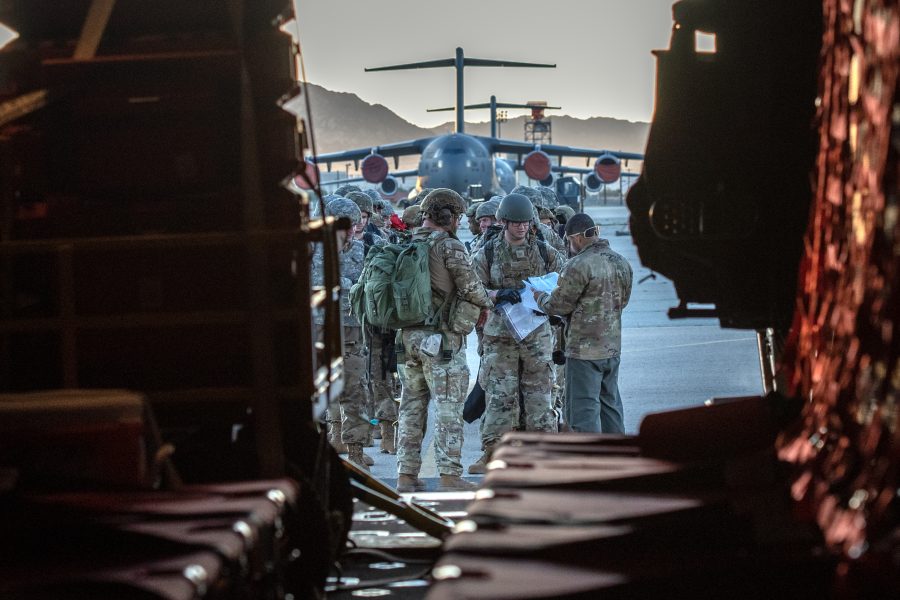The Air Force is making sweeping changes in how it deploys Airmen, but the differences among the major commands’ needs are creating problems in the quest to define a single new deployment model as top commanders push back the idea that one system will work across the entire force.
“The problem with implementing [AFFORGEN] that I’ve seen – and I think it’s widely recognized now – is that one size doesn’t fit all,” said Air Force Secretary Frank Kendall in a livestreamed Facebook discussion Sept. 6. “Every unit doesn’t have the capability, just because of its mission requirements, to do that sort of a model cycle.”
Kendall and Chief Master Sergeant of the Air Force David A. Flosi discussed the new force generation model, known as AFFORGEN, and the drive to change from deploying individuals to deploying wings, as the Air Force’s “units of action.”
AFFORGEN
The AFFORGEN cycle consists of four six-month phases: deploy; rest and reset; prepare; and high-end training to get ready for the next deployment. Officials say the model will help articulate capacity, risk, and readiness to the joint force, make rotations more predictable for Airmen and families, and enhance unit cohesion during deployments.
“Part of our discussion with the MAJCOM commanders … was, ‘We’ve got to have a standard model that we all use, that we can talk about, and be on the same page, particularly as we talk to the Joint Staff,’” then-Chief of Staff Gen. Charles Q. Brown Jr. said in 2021.
But Airmen at multiple levels pushed back. In July, before he retied from commanding the 18th Air Force, Maj. Gen. Corey J. Martin told Air & Space Forces Magazine that mobility Airmen would need a modified AFFORGEN because of continuous high demand for airlift and refueling.
“Our Airmen don’t necessarily have the luxury of having a six-month reset in the traditional sense that it was designed,” Martin said in July. ”I understand why we have it, but for the 18th Air Force, as it was designed, it is probably not sustainable, because of the amount of operations we continue to do in that reset band.”
Kendall told the Facebook audience that commanders will be able to tweak the model to fit mission needs.
“What I think [Chief of Staff Gen. David W. Allvin] and I have been encouraging people to do is figure out what kind of a readiness creation and expenditure cycle makes sense for what you do, and then tailor around it,” he said. “So don’t use just the one model and feel like you rigidly have to follow that or force it into your place where it may not be compatible.”
At the same time, Kendall reiterated his belief in AFFORGEN’s “underlying concept”: giving Airmen time to rest, reset, and train after deployments, and that doing so can build back readiness after years of stretching troops and equipment to the breaking point.
Units of Action
Ongoing operations in the Middle East led to the Air Force “crowdsourcing” deployments—sending individuals or small groups from dozens or even hundreds of different units, who to met down-range and had to become a unit instantly. Instead, leaders want to move back to a fight-how-you-train model where Airmen go through workups as a group, first as “expeditionary air bases,” then as task forces, and eventually as wings.
Getting to that system, however, has involved a series of overlapping changes.
In 2022, Air Combat Command started designating “lead wings,” with the idea that squadrons would be assigned those wings, sometimes only for a time. The combined units would then train together in anticipation of a large-scale conflict that would require massive deployments.
Expeditionary air bases started deploying in October 2023, drawing together Airmen from U.S. bases in the same region to train and deploy together as a team for setting up a base, establishing and supporting operations, and providing leadership.
That was followed by Air Task Forces—essentially a command staff and a base support team, all at the same base, with attached Mission Generation Force Elements and Mission Sustainment Teams. The Air Force announced six Air Task Forces in May, and the first one, the 12th Air Task Force at Scott Air Force Base, Ill., stood up Sept. 4.
Deployable Combat Wings represent the next phase of this development. The DCWs would deploy as a “unit of action,” with the goal of having some ready to go by the fall of 2026.
“This is a transition period, and we will stay in a state of transition, which is driving multiple methodologies being in the field at the same time,” CMSAF Flosi said, acknowledging the service has disparate plans in place at once.
Adjusting individual rotations to the new schedule will not be instant. Some Airmen have been selected for assignment, deployment, or to relocate in the middle of their AFFORGEN cycle, forcing them to leave their teams in mid-stream.
“We have put people into the lead wing process in the cycle, and they’ll also get tapped for an out-of-cycle deployment, or they will get tapped for PCS four months before the deployment window,” Flosi said. “We are working our way to get much better at that.”
Flosi said personnel specialists are working to prevent such occurrences.
“The codes are coming to stabilize them through the cycle,” he promised.
